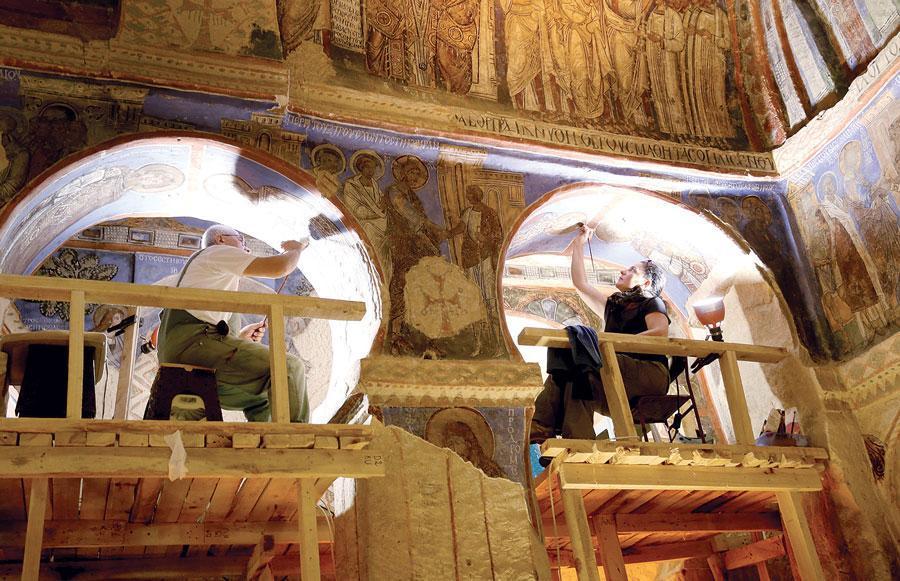
Millennial old frescoes in the historic rock-carved Tokalı Church in Cappadocia region, which has been on the UNESCO World Heritage list since 1985, are being restored by Turkish and Italian experts.
The Tokalı Church, which was built in the 10th century on a rock and is considered one of significant artifacts, is home to wall paintings depicting scenes from the life of Jesus.
Within the scope of the works that have been carried out for four years in collaboration with the Turkish Culture and Tourism Ministry and Italy’s Tuscia University, some wall vaults of the historic church are also being reinforced.
The frescoes, as well as cracks on the walls, have been restored to their original using various chemicals and dyes with the touch of a brush.

Speaking to state-run Anadolu Agency, the Nevşehir Museum Director Murat Gülyaz said the church was different from other historic churches in other parts of the world, as pictures of Jesus were depicted on the walls.
He said the works had been sponsored by Argos Structure for the last two years.
“We will continue working in the coming years from time to time in the church. As it dates back 1,000 years, it needed to undergo a restoration process. The works started in the northern wall, continued in the apses and will continue in the other walls in the coming years. There were cracks and distortions on the pigments of the wall paintings. Now, they are being restored,” said the museum director.
The head of the restoration project, Turcia University Middle Ages History of Art Professor Maria Andaloro said they were excited to work in a historic church in Cappadocia, which has lots of cultural and historical values as a whole.
She said the Italian team working for the church also worked in cultural and historical restoration projects in Jordan, Lebanon and Afghanistan and that they currently worked in Cappadocia under the light of their experiences.
“The wall paintings here are very important. People from around the world come to Cappadocia. The restorers have taken a historical responsibility. Frescoes made 1,000 years ago are being restored by our team after 1,000 years. This is very important and exciting. I hope we do a good thing for people to come and see this place,” Andaloro.
The Niğde Museum Director archaeologist and restorer Fazlı Açıkgöz said the project was carefully implemented to keep historical values alive for the next generations and even a small mistake could bring unrecoverable results.
Açıkgöz spoke about the details of the restoration work.
“Here we have removed the dust on the frescoes; detected the distortions on the surface and worked on them. We used various chemicals on the colored surface for reinforcement. As for the aesthetic presentation, we make point-sized interventions on the colored fields for visitors to perceive the original painting better. We work one and a half months every year,” he said.
“This work requires too much patience and talent. We must be very careful when cleaning. If we make mistakes, we could lose these surfaces. Our purpose is to preserve these paintings as best as we can and maintain them for the coming generations,” said the archeologist.